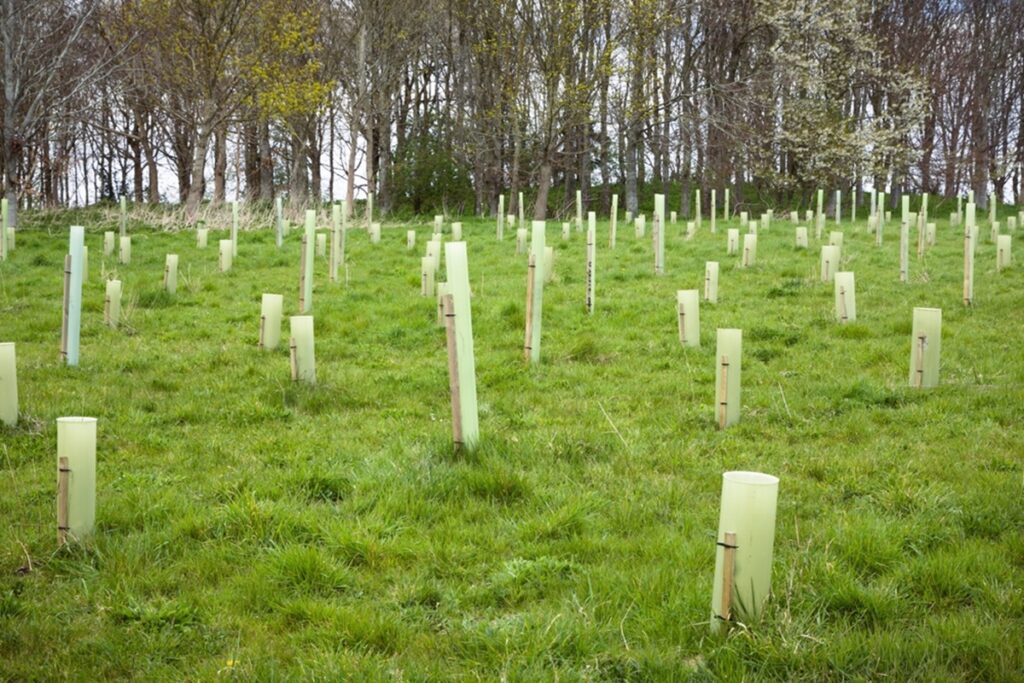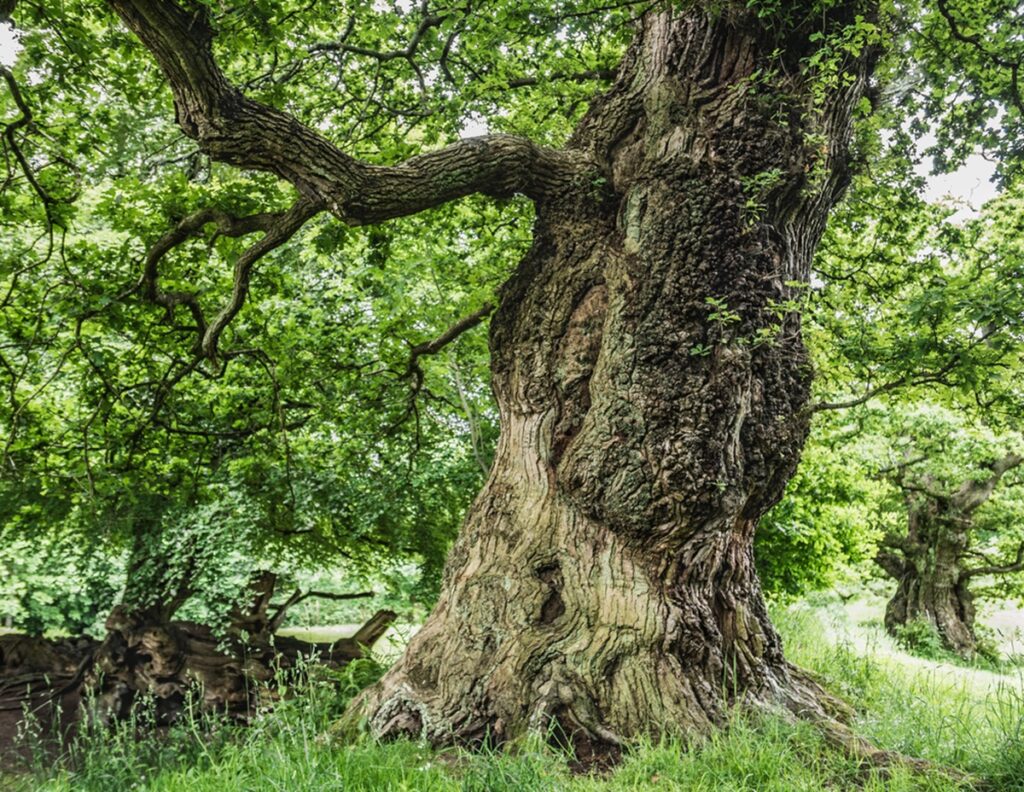Biodiversity Net Gain: an Overview
The introduction of biodiversity net gain (BNG) into UK law through the Environment Act, which received royal assent in 2021, led to significant changes to the way development projects across Northumberland are planned and delivered.
The principle behind BNG is straightforward: development should leave biodiversity in a measurably better state than it was before construction began. For most planning applications in Northumberland, bng is now a mandatory requirement alongside other planning policies, meaning that developers need to demonstrate how their schemes will deliver a minimum 10% increase in biodiversity.
This legal obligation, which became effective from February 2024 after a two year transition period, is embedded within the National Planning Policy Framework (NPPF) and supported by Natural England’s statutory guidance, Local Nature Recovery Strategies, Northumberland Wildlife Trust and the ecological priorities of local authorities in the north east.
BNG requirements
Developers must work with qualified ecological consultants who can calculate the baseline biodiversity value of a site and assess its condition both before and after development. Where the post-development value does not reach the required net gain, mitigation or enhancement measures must be identified, either on-site or off-site, and presented as part of a formal net gain plan to the local planning authority.
Integrating BNG at the earliest stage of a project is essential to avoid costly redesigns later in the planning process. Protecting key ecological features, such as ancient woodlands, priority habitats, and wildlife corridors, helps tackle climate change and lies at the heart of biodiversity enhancement policy in Northumberland.

Ecological Features in Northumberland
Northumberland is renowned for its natural beauty and landscapes of high distinctiveness, from the rolling hills of the Cheviots to the rugged Northumberland coastline, the wide open spaces of Kielder Forest, Earsdon West Forest and the historic Hadrian’s Wall corridor.
These varied habitats support a rich array of wildlife, including protected species such as bats, otters, red squirrels, badgers, great crested newts, and a wealth of birdlife that depends on both coastal and inland ecosystems. Northumberland County Council is absolutely determined to conserve these ecological features and the wildlife they support.
Protection of the natural environment
Any biodiversity net gain plan in Northumberland must take account of these existing habitats and ensure that development does not negatively affect ecological connectivity or local species populations. Northumberland County Council, along with local wildlife trusts and conservation partnerships, has placed a strong emphasis on habitat restoration, sustainable development, and creating green infrastructure that enhances the county’s ecological networks.
For this reason, bng proposals are subject to detailed scrutiny, with a clear expectation that they deliver genuine and lasting ecological improvements and encourage wildlife.

Preparing a BNG Assessment
Before submitting a planning application, the first step is to commission a BNG assessment carried out by an experienced ecologist. This involves establishing a biodiversity baseline for the site through detailed habitat surveys, using the government’s statutory Biodiversity Metric to record habitat types, environmental condition and ecological value.
Where relevant, protected species surveys may also be required alongside the baseline assessment. For example, sites near woodland, rivers, wetlands, or historic structures often provide habitat for bats or otters, while ponds or damp grassland may support great crested newts.
Integrating these surveys into the BNG process ensures that a development not only complies with biodiversity net gain bng requirements but also adheres to strict legal protections for wildlife and efforts to combat global warming.
Once the baseline is established, the ecologist will assess the projected biodiversity value of the site following development in terms of habitat units. Landscaping schemes, the creation of new habitats, and long-term management plans are factored into the calculation. If the projected value of habitat units falls short of the required 10% net gain, additional enhancements must be proposed to bridge the gap.

On-Site and Off-Site BNG
In Northumberland, biodiversity net gain is often achieved through on-site measures. These might include creating wildflower-rich grasslands, planting native woodland, enhancing hedgerows, restoring wetland habitats, or introducing wildlife-friendly features such as green roofs or sustainable drainage systems (SuDS).
Where it is not possible to deliver the full biodiversity uplift within the development boundary, developers may turn to solutions away from the development site. This can be achieved by purchasing biodiversity units from a registered habitat bank or other landowners, ideally within the same local authority area or within the wider North East region, ensuring local ecological benefits are retained. Conservation covenants or long-term management agreements for the required 30 years must be put in place for these units.
As a final option, developers may purchase statutory biodiversity credits from the government, but this is generally seen as a last resort.

Protected Species Surveys
Alongside BNG assessments, many development sites in Northumberland will require additional ecological surveys to support planning applications. Protected species surveys for bats, badgers, red squirrels, otters, reptiles, and great crested newts are commonly requested by planning authorities.
Undertaking these surveys early ensures that plans aligns fully with legal protections and the mitigation hierarchy of avoid, minimise, restore, and as a last step, compensate.
By combining biodiversity net gain assessments with the necessary species surveys, an ecologist can provide a robust and compliant strategy for securing planning permission.
The BNG Plan
Creating a formal net gain plan is a very complex process: it must set out in detail how a development will achieve its biodiversity targets. It includes habitat management and enhancement measures, long-term land management and monitoring plan schedules, and evidence that ecological improvements will be maintained for at least 30 years, which is the statutory requirement.
Northumberland County Council requires these plans to align with its Local Nature Recovery Strategy and other regional ecological frameworks. The plan must demonstrate how habitats will be protected, restored, and enhanced, and how biodiversity net gain will be achieved throughout the life cycle of the project.

Professional Support for BNG in Northumberland
Our experienced ecology consultancy provides BNG assessments for north east developers and across the UK. We manage the entire process, from baseline surveys and Biodiversity Metric calculations to habitat creation advice, implementing bng and long-term land management strategies.
Our team works with major north east developers aiming to secure planning permission, commercial organisations, and private householders, ensuring that biodiversity net gain is seamlessly integrated into the design of new developments.
Where off-site delivery is required, we we use our ecological knowledge and hands on approach to guide clients through sourcing bng units on a suitable habitat bank, understanding conservation covenants, and ensuring compliance with local authority requirements. With extensive knowledge of Northumberland’s habitats and ecological priorities, we deliver BNG reports that satisfy legal requirements and are tailored to the local landscape.
Request a Free Quote for BNG Plans in Northumberland
If your application for planning permission in Northumberland requires a biodiversity net gain assessment, we can provide a free quote tailored to your site. Whether you are developing a small residential property, a commercial site, or a major infrastructure project, our ecologists will deliver a clear and compliant BNG report to support your planning application.
Simply contact us today to discuss your requirements and arrange a site visit. By working with our team, you will be fully supported and can be confident of meeting the requirements of the Environment Act 2021 and Northumberland County Council, while delivering measurable ecological benefits that support both development and conservation.